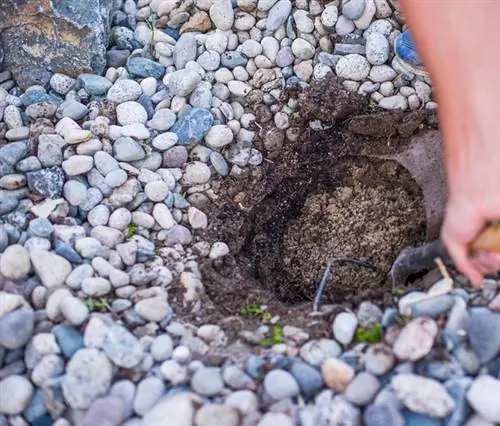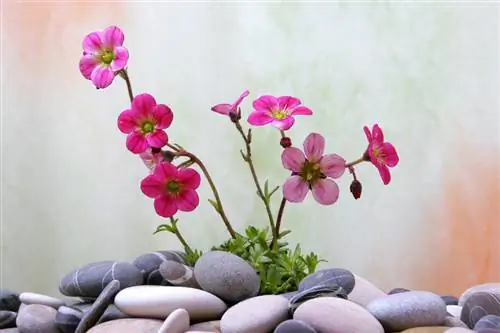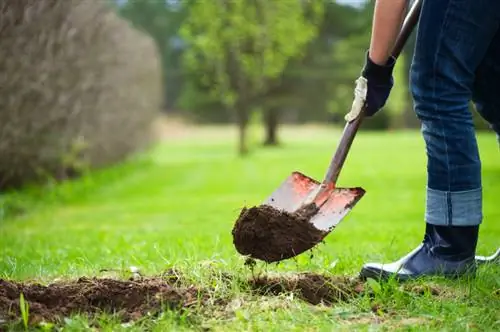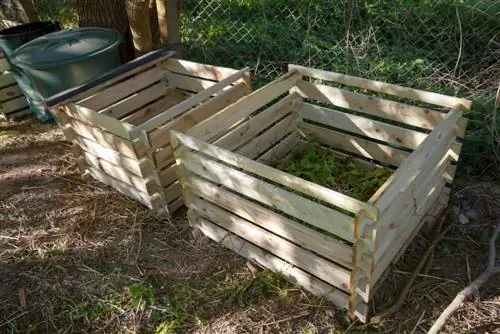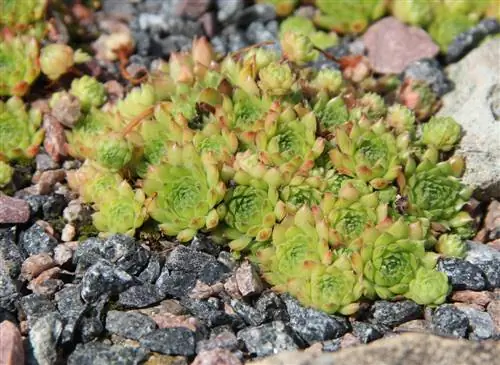- Author admin [email protected].
- Public 2023-12-16 16:46.
- Last modified 2025-06-01 06:02.
Rock garden soil should above all have good drainage properties, as most typical rock garden plants prefer dry locations. However, commercially available compost soil with its high nutrient content is unsuitable because rock garden plants, which are used to poor soils, only need low nutrient concentrations.
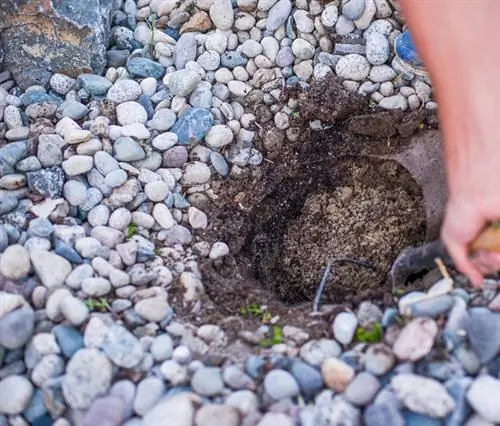
Which substrate is suitable for a rock garden?
For rock garden soil, it is recommended to mix existing, weed-free topsoil with fine stone chippings or gravel yourself. Pay attention to suitable types of rock (limestone or silicate rock) and ensure good drainage properties by varying the proportion of rock depending on the type of plant.
Mix rock garden soil yourself - Here’s how it works
It is of course ideal to mix the right soil yourself from existing, weed-free topsoil and fine chippings or gravel. For “normal” rock garden plants, a rock content of around 30 percent should be sufficient. For plants that are more complicated to care for, the proportion can rise to 50 to 80 percent, depending on the species. Always use the same type of rock for the soil mixture as you chose for the “boulders”. If the soil is very heavy or clayey, you should also mix in gravel and grit into the deeper layers of the earth to ensure sufficient drainage.
Suitable soil for lime-loving and lime-escaping plants
When selecting the rock - regardless of whether it is boulders or gravel - you have to pay attention to whether it is limestone or silicate rock. After all, not every rock garden plant grows on every stone. Lime-loving plants need limestone rocks, while they would inevitably die on silicate rocks such as granite or slate. Lime-fleeing species, on the other hand, must not come into contact with lime and are therefore better off in silicate mixtures.
Soil for lime-loving plants
If you mix soil for lime-loving plants, avoid using peat (which acidifies the soil) or bark mulch (same effect) and instead use between 10 and 15 percent high-quality bark humus or garden compost that is several years old. High-quality clay-containing potting soil from specialist retailers is also very suitable.
Soil for calcareous plants
Calciferous plants, on the other hand, require peaty soils with a low pH value. Here it is best to mix 30 percent topsoil or lawn soil with 20 percent bark humus, 50 percent sod peat, gravel and grit (silicate-based!, granite is suitable, for example (€289.00 at Amazon)) and around one kilogram of horn shavings per cubic meter. Instead of this mixture, you can simply mix ready-made bog soil with fine stone.
Mulch the soil surface with stone chippings
It has proven to be very effective if, after planting, an approximately one centimeter thick layer of mulch made from the rock chippings mixed into the soil is applied to the substrate. The surface then dries faster and the plants feel more comfortable. The soil mixtures described above have also proven effective for planting in troughs, bowls, pots, balcony boxes, etc.
Tip
If a drainage layer has to be added to the ground, lime-free building rubble such as brick chippings or broken roof tiles is also suitable.

